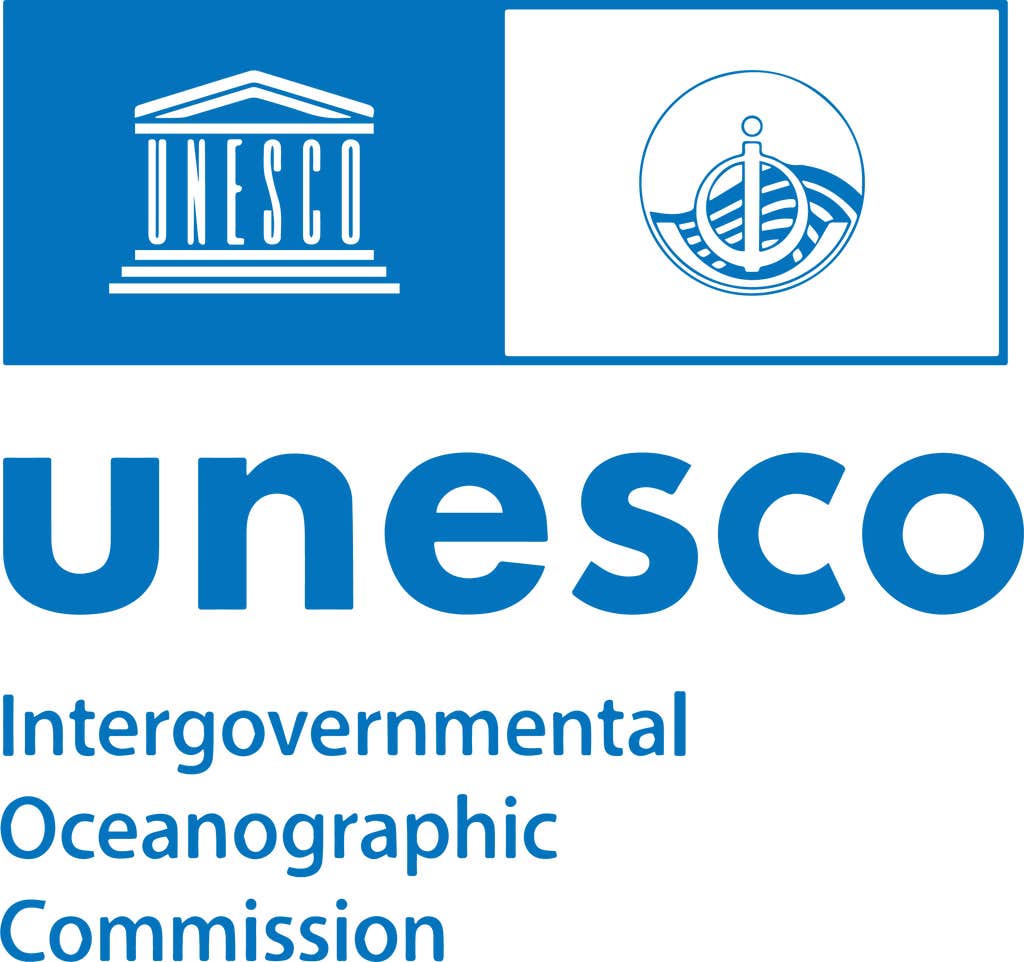Ocean Exhibition Catalog
Nautilus Ocean Exhibition
Schmidt Ocean Institute’s
Artist-at-Sea Collection
The Explorers Club
March 2022

“The horizon is not far away at the height of our sight. It is right here; close to us, we are floating on it. The sea is our borderline, between the question and a hint for the answer.”
~ Ale de la Puente, Interdisciplinary Investigation of the Pescadero Basin (2021)
Artists and scientists both have the ability to offer a deeper understanding of our Ocean. They are important storytellers that help people to see in new ways. Applying these talents to ocean science and conservation can create a new space for dialogue and understanding. Like scientists, artists conceptualize and put together ideas in new ways. We anticipate that the cross fertilization of disciplines through Schmidt Ocean Institute’s Artist-at-Sea program will result in a broader awareness of the important research occurring on Falkor and a better understanding of the complex ocean issues facing us today. We believe that by providing a platform where experts from different disciplines are brought together, cross-pollination of ideas will transform both the scientists’ and artists’ work.
Schmidt Ocean Institute (SOI) is a virtual institute that operates the research vessel Falkor and will soon transition operations to its new vessel Falkor (too). The ship and its assets are available at no cost to scientists worldwide working to explore, discover and understand our ocean. SOI catalyzes ocean exploration and research and educates and engages the public to inform the wise stewardship of our planet. SOI is uniquely positioned to provide collaborations between artists and some of the world’s leading marine scientists, using our vessel as a platform of connection and interdisciplinary reach. Our science expeditions offer a range of unique technology-based ocean research that lends to artistic exploration. Visit www.schmidtocean.org.
David Bowen
CNC carved acrylic
Seafloor swath
These sculptures were created using seafloor data collected by the multi-beam sonar scanner aboard the R/V Falkor during a 9 day transit from Astoria, Oregon to Honolulu, Hawaii in July 2019.
1″ x 16″ x 16″
2019
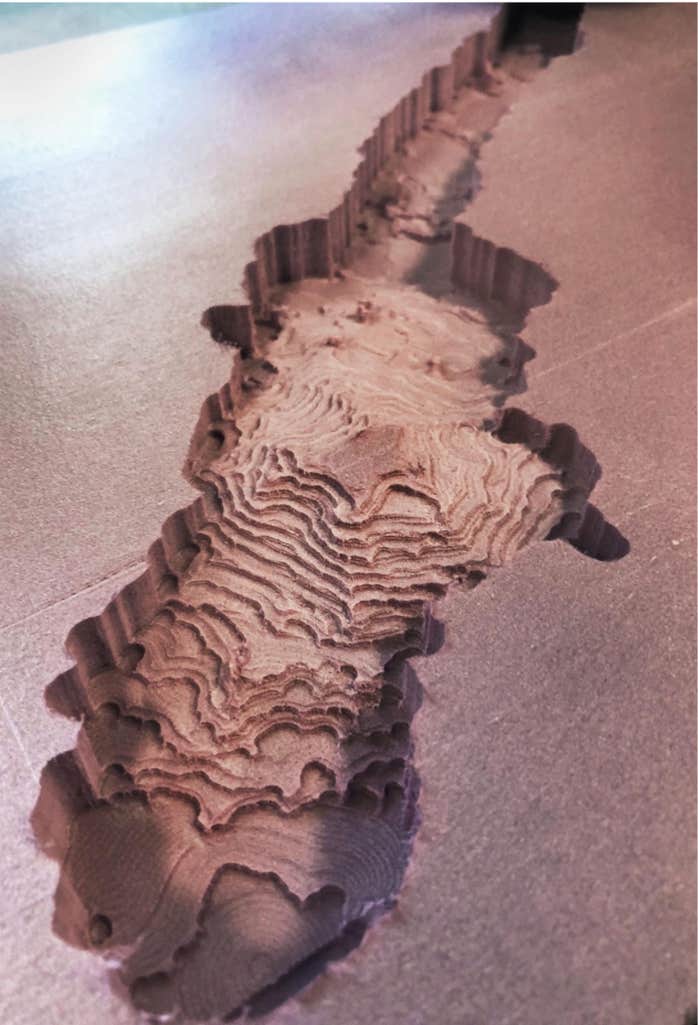
Meredith Brindley
Robot-assisted ink drawing of seamount mapping data with watercolor on paper (all)
Seamount Mapping Path Composed for Boat Series
In March of 2019, the Schmidt Ocean Institute’s R/V Falkor mapped a previously unmapped seamount off the coast of North America with their multibeam mapping system. Brindley used an XY plotting robot while on the vessel to draw the mapping data they captured in ink and she added watercolor to depict the sea from a birds-eye-view.
22″ x 30″
2019
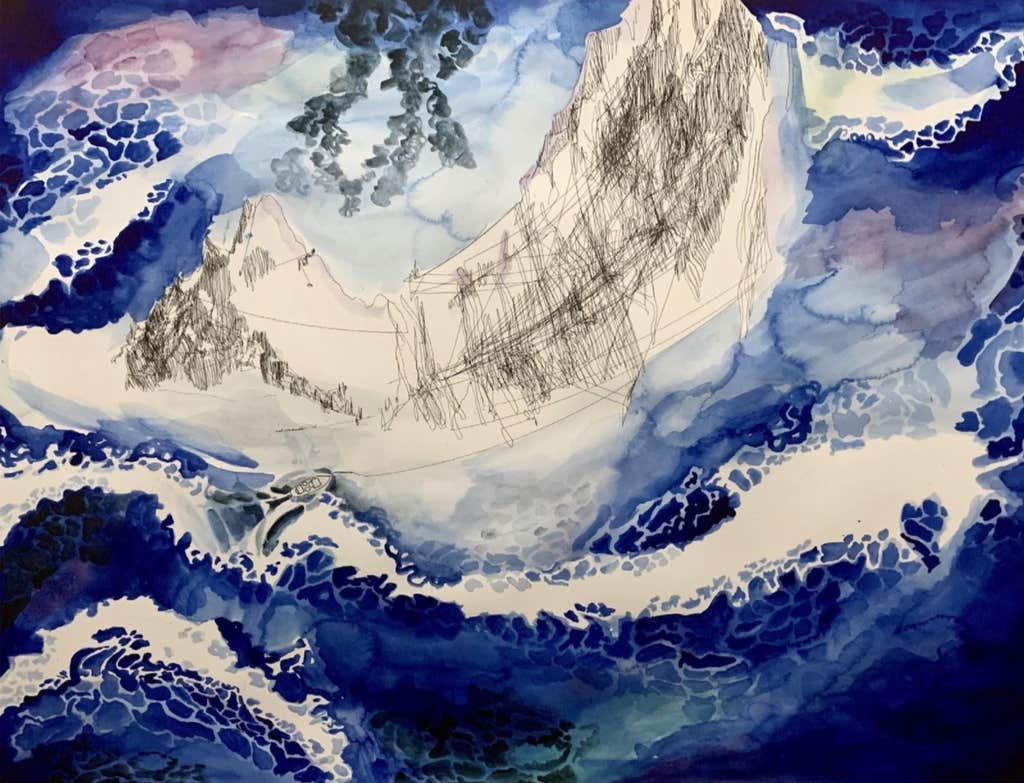
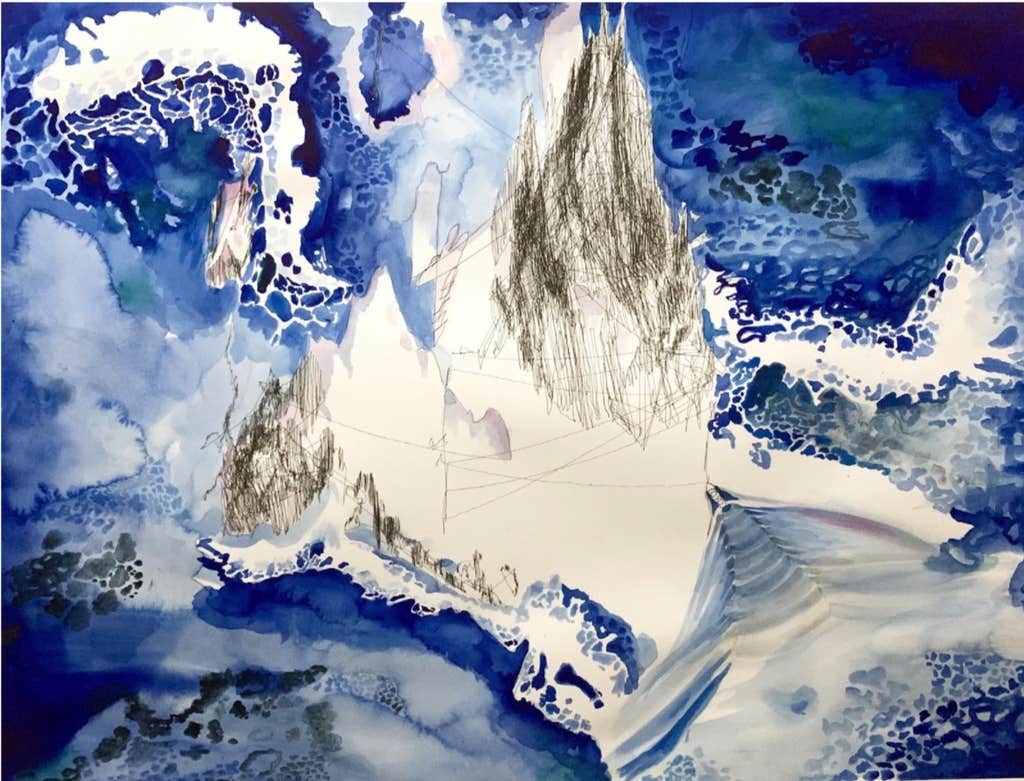
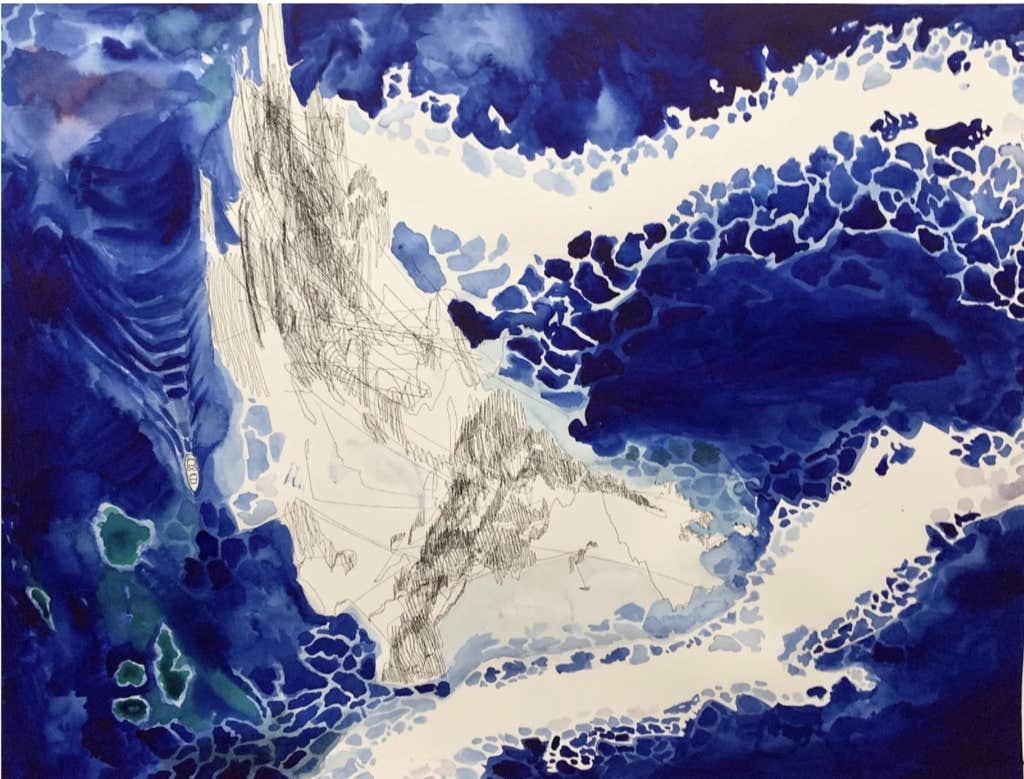
Kirsten Carlson
Watercolor, graphite, digital
Plankton Poster
Field sketches of nanoplankton (5-20 µm) and microplankton (20-200 µm) sampled during R/V Falkor cruise with Imaging FlowCytobot, 5 mL sea surface water every 22 minutes, individual plankton identified with UTC time stamp.
21.75″ x 32.5″
2017
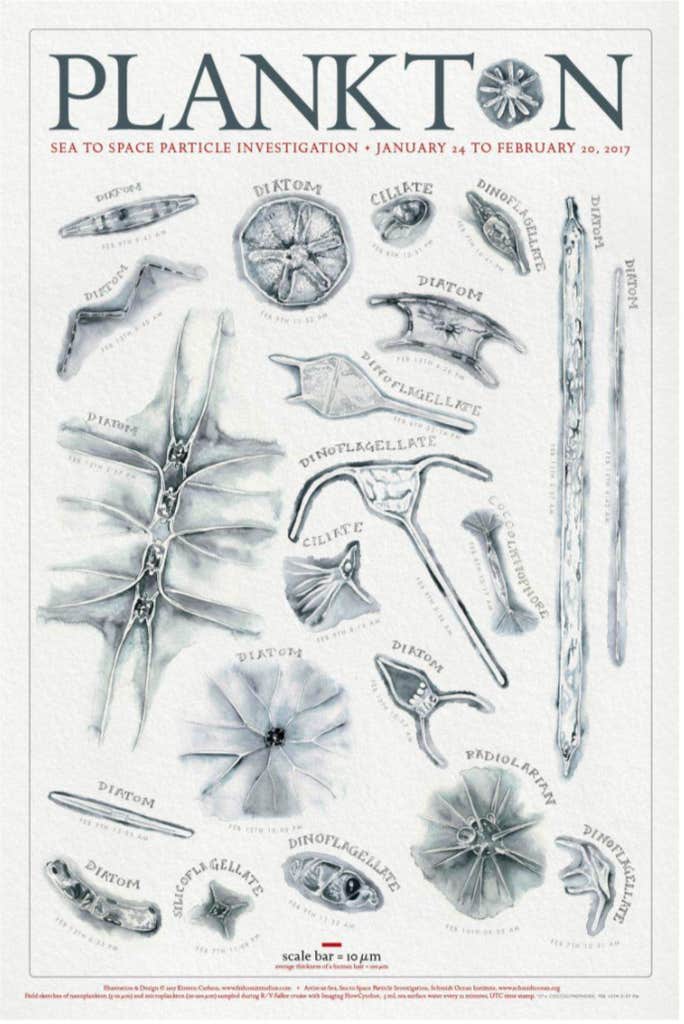
Ellie Hannon
Oil Paint
Ashmore Reef
Colorful, semi-abstract paintings based on various life and creatures seen in the mesophotic area of Ashmore Reef off North West Australia during ROV SuBastian’s dives.
39″ X 49″
2021
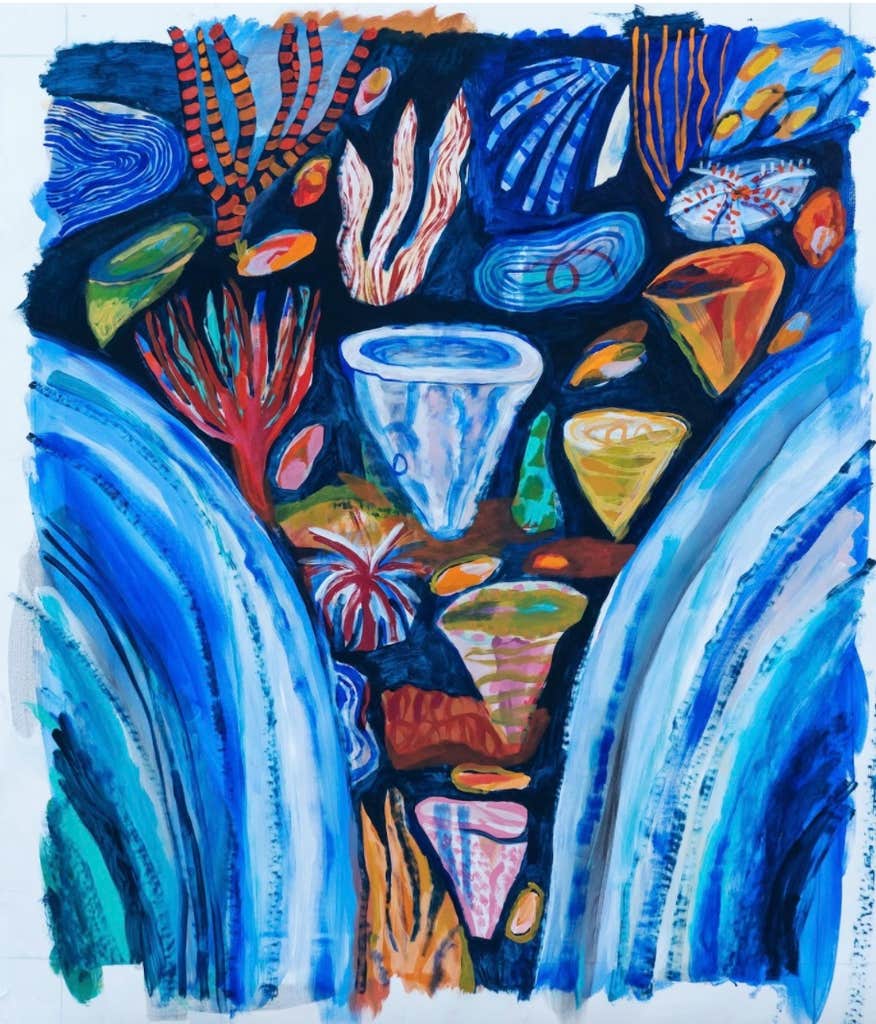
Lori Hepner
Framed abstract photograph, black background
Cascadia Margin #10.26.28, R/V Falkor, Cascadia Margin, Pacific Ocean
This piece is a documentation of a performance piece by Lori Hepner using real time projection and LEDs. Wearable LEDs play back the mapping images captured during the voyage, one column at a time, as the artist moves over the course of a few minutes. The performance was done in R/V Falkor’s garage during the Cascadia Margin mapping mission.
16″ x 16″
2018
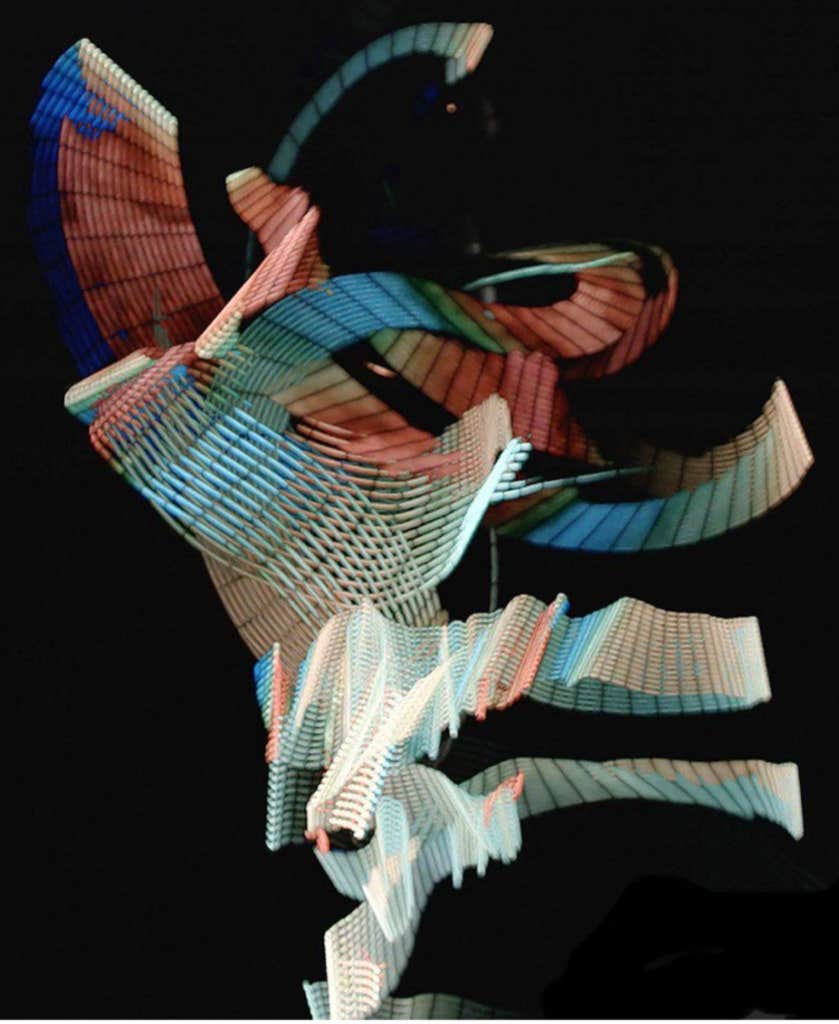
Lea Kannar-Lichtenberger
Acrylic, watercolor and Charcoal on Arches Paper
Beyond the Multibeam trail in the Coral Sea
This work reflects on the mapping lines that are slowly making the unseen places beneath the oceans seen. The journey taken by the R/V Falkor to Kenn Reef is highlighted, with other mapping lines adding depth, the dominate colour is a blue/turquoise with splashes of oranges and light greens.
47.5″ x 31.5″
2021
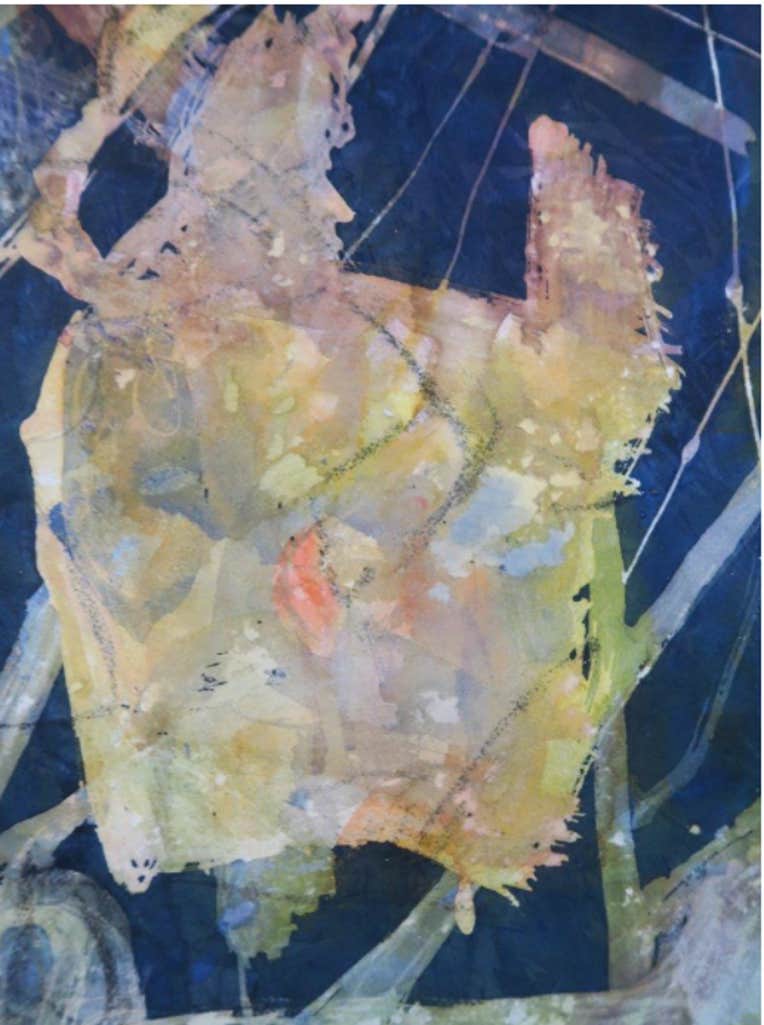
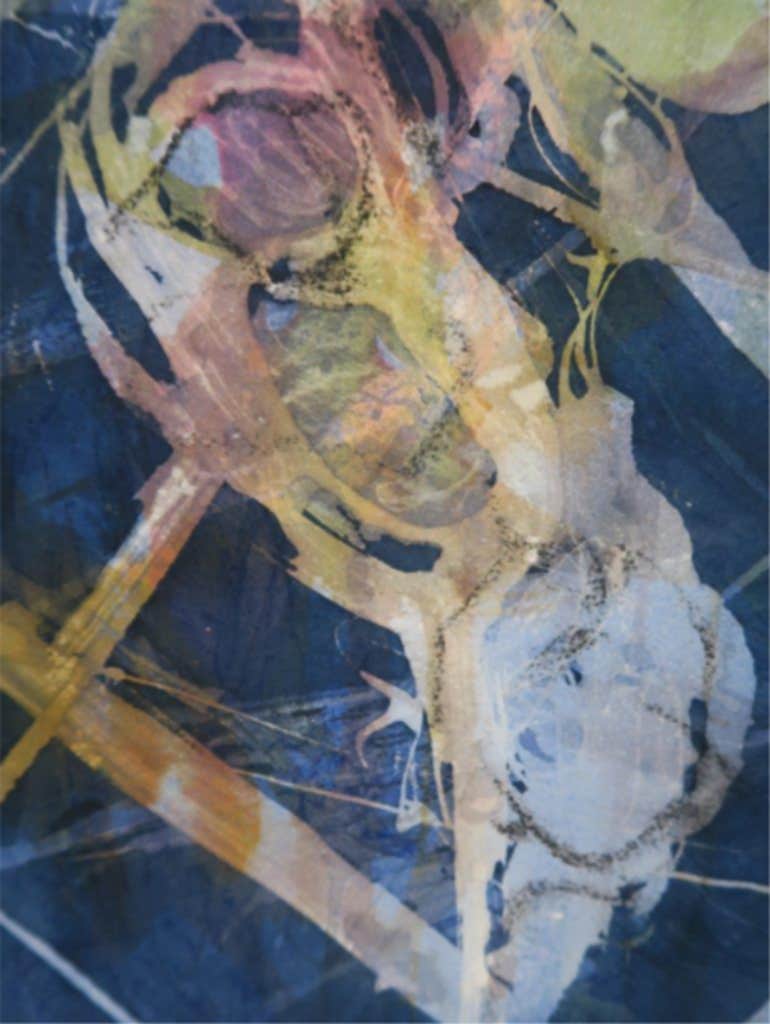
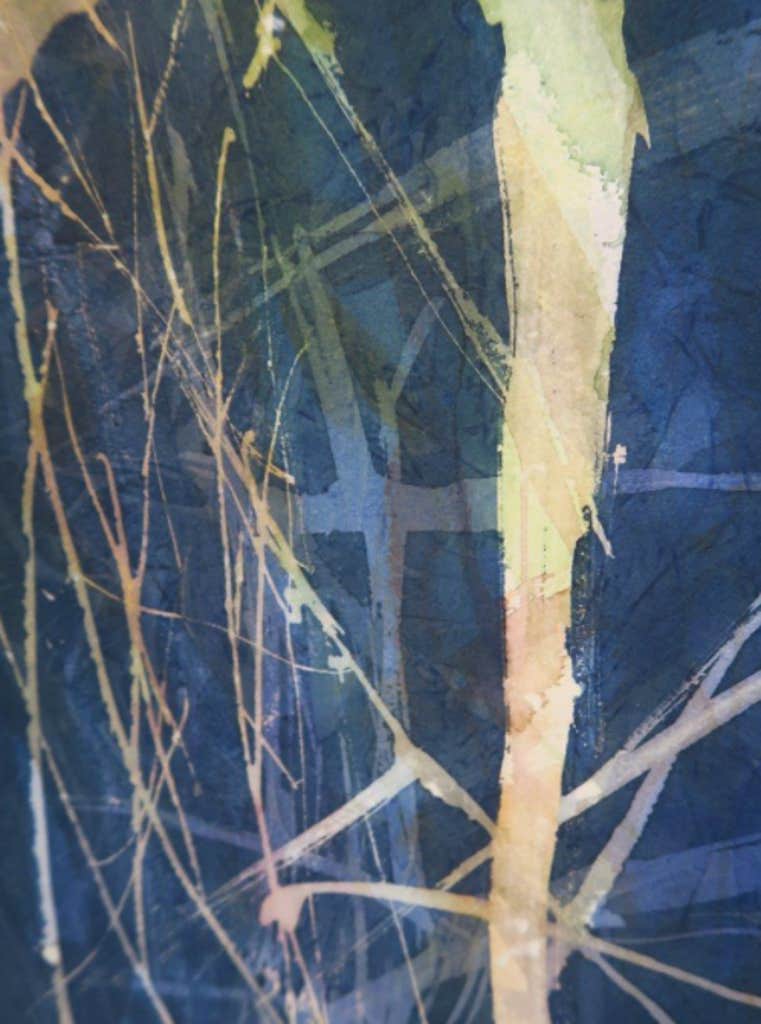
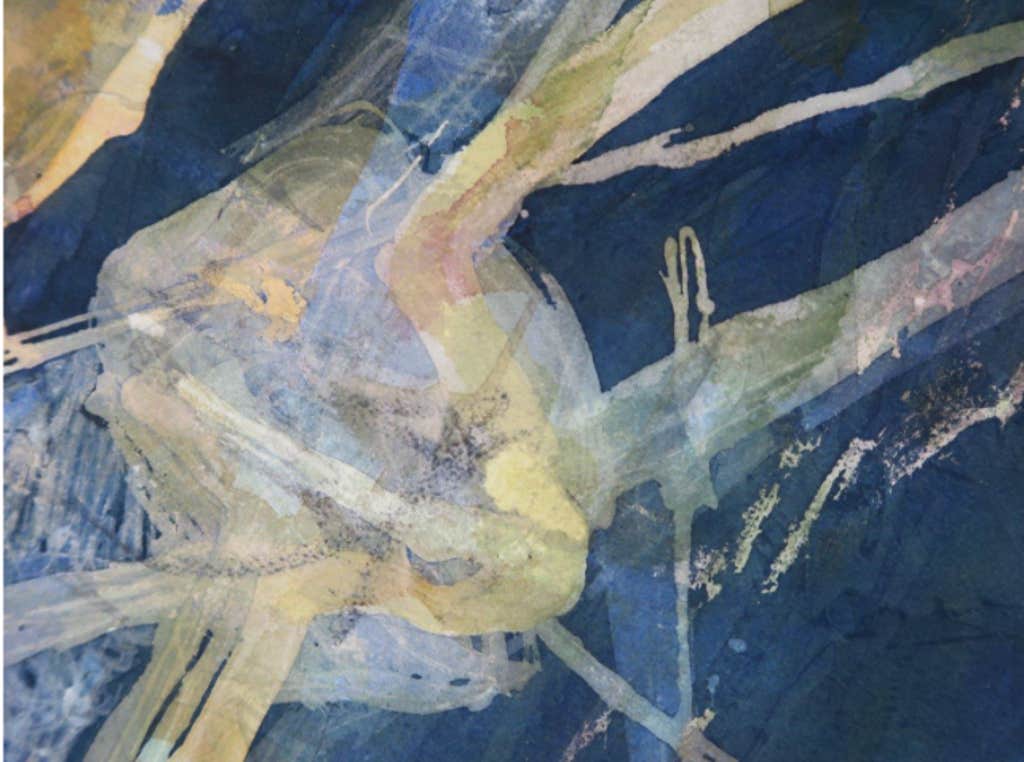
Christine Lee
PLA filament (3d printed glass sponge)
Lefroyella Glass Sponge with Anemone SUK203-1, 2019
For each dive the ROV collected specimens as designated by the scientists who watch through the live video camera feed, the organisms in their habitat. After the specimens were documented and preserved, I would take pictures and upload them using the Autodesk photogrammetry program ReCap Pro to create an archive of 3D scans.The specimens were 3D printed to capture the incredible diversity of forms and surfaces of these organisms.
5″ x 5″
2019
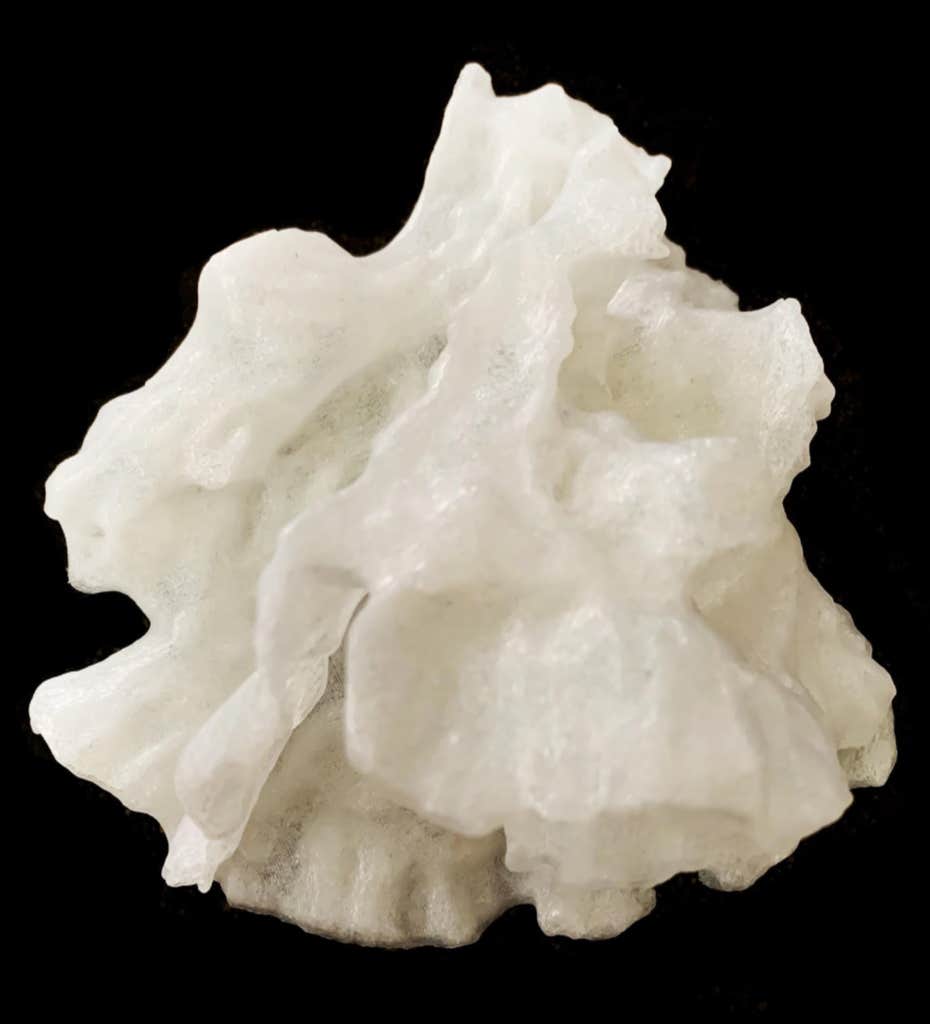
Christine Lee
PLA filament (3d printed glass sponge)
Cold Water Eddies, 2019
The dynamic movement of ocean water plays a role in species diversity and distribution. The swirling of water into currents that flow in a somewhat circular motion are known as mesoscale eddies with the rotation dependent on the temperature and salinity of the water masses inside and outside the eddy. Focusing on eddies located in the region where our expedition was exploring, I worked with the scientists to embroider on paper the estimated averages of these eddies. Using the gradient numbers calculated that characterize the Bell curve for each eddie. I created a stitching pattern sequence with cooler tones stitched counterclockwise for eddies under the sea surface, and warmer tones stitched clockwise for eddies above.
24” x 18”
2019

Molly Maps
Acrylic on Canvas
The Phoneix Islands
This imaginative perspective of the Phoenix Islands was painted on board the Falkor while a sea floor mapping project was being conducted in between the islands. Because the Phoenix Island Protected Area is so vast (408,250 km2 /157,626 sq. miles) there was barely any land sighted during the five days the Falkor was within its borders.
22” x 30”
2018
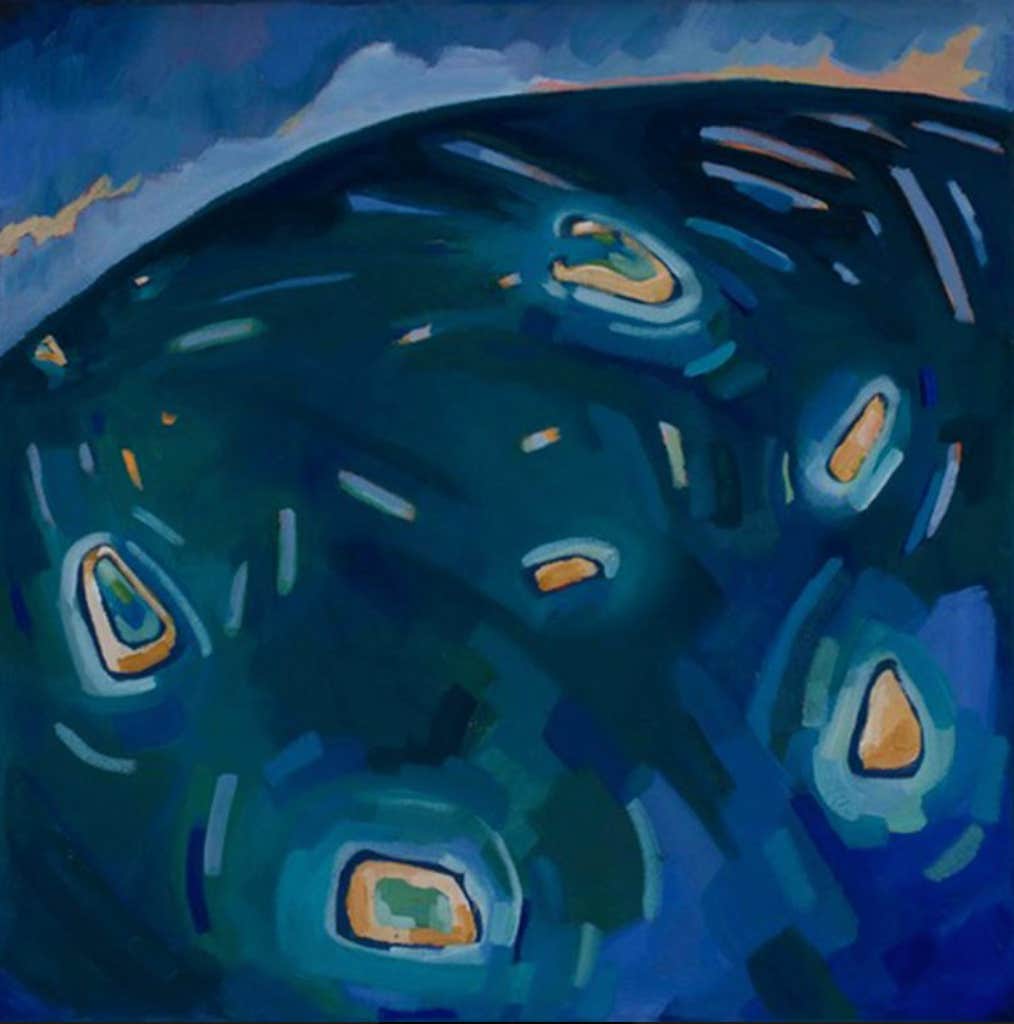
Kishan Munroe
Paper, giclee prints, wire, wood ink and graphite
Fathoming Evolutions of Oceanography – 1
IIn the background there is Morse code as well as binary code which are translations from the “Neverending Story”. The variations within the text also reference the various atmospheres of the ocean (Epipelagic – Hadopelagic). The paper boat taps into the spirit of innovation and imagination. At center is a copy of the first underwater anthrophomorphic dive suit. It is juxtaposed to a copy of SuBastian to show the evolution in oceanographic apparatuses. They both sink lower toward a wireframe render of the second sea mount mapped during our Pacific expedition.
48″ x 24″
2019
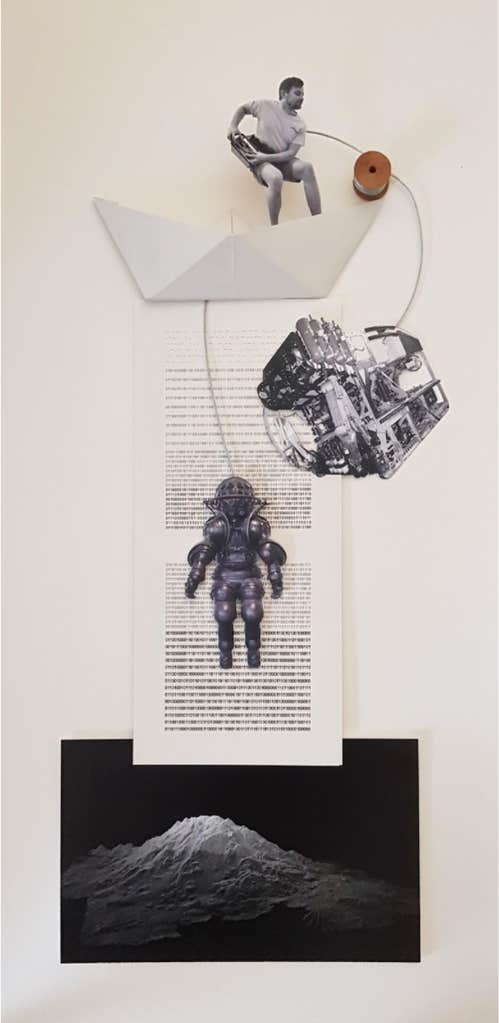
Leslie Reed
Archival Pigment Print on Paper; Film Treated with Seawater
Points of Departure, N 8° 41.772, W 179° 44.453, pH: 8.08 (1)
Points of Departure, R/V Falkor, N 8° 41.772, W 179° 44.453, pH: 8.08, UTC: 01:10 12/30/2015, Transit Guam to Honolulu
28″ x 24″
2016

Jason Rodriguez
PLA, tinted resin
Lamp from the Deep
3D printed lamp using data from R/V Falkor’s mapping of Osprey Reef, Shark Reef, and Vera Reef in Australia.
14″ x 6″
2021
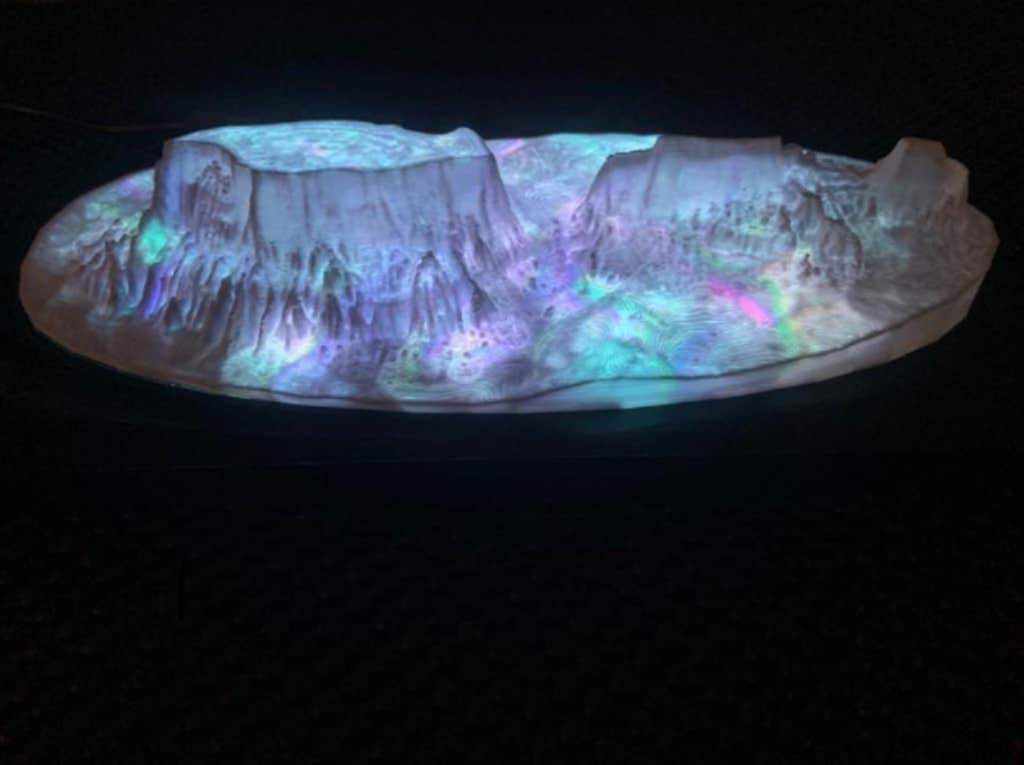
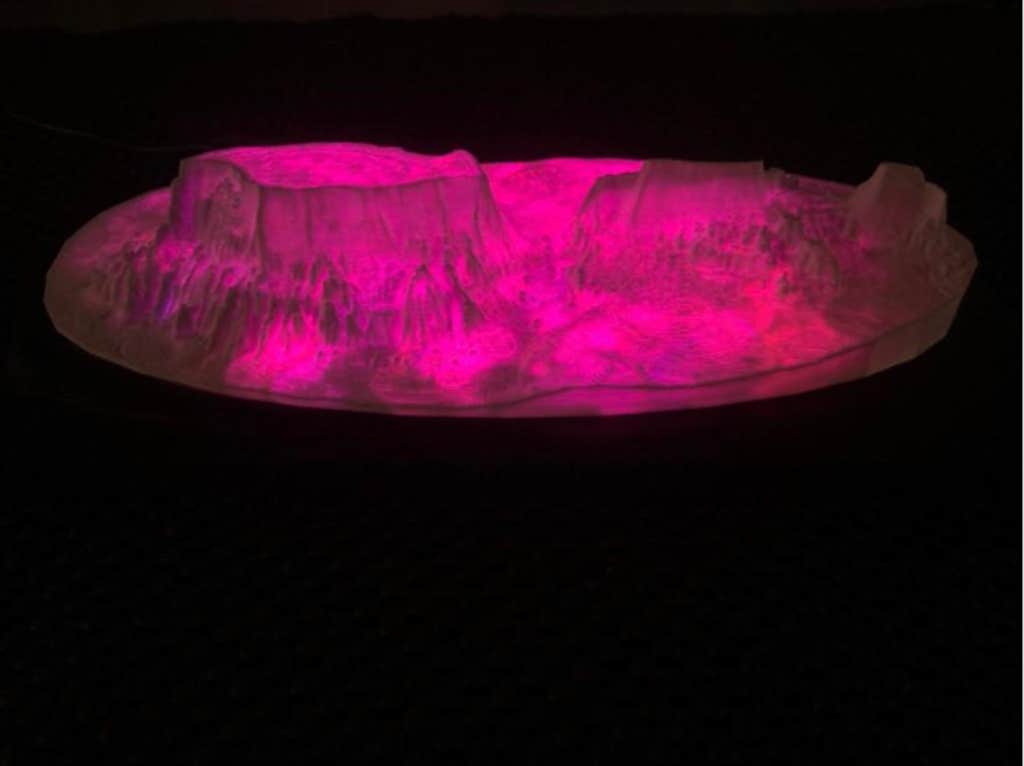
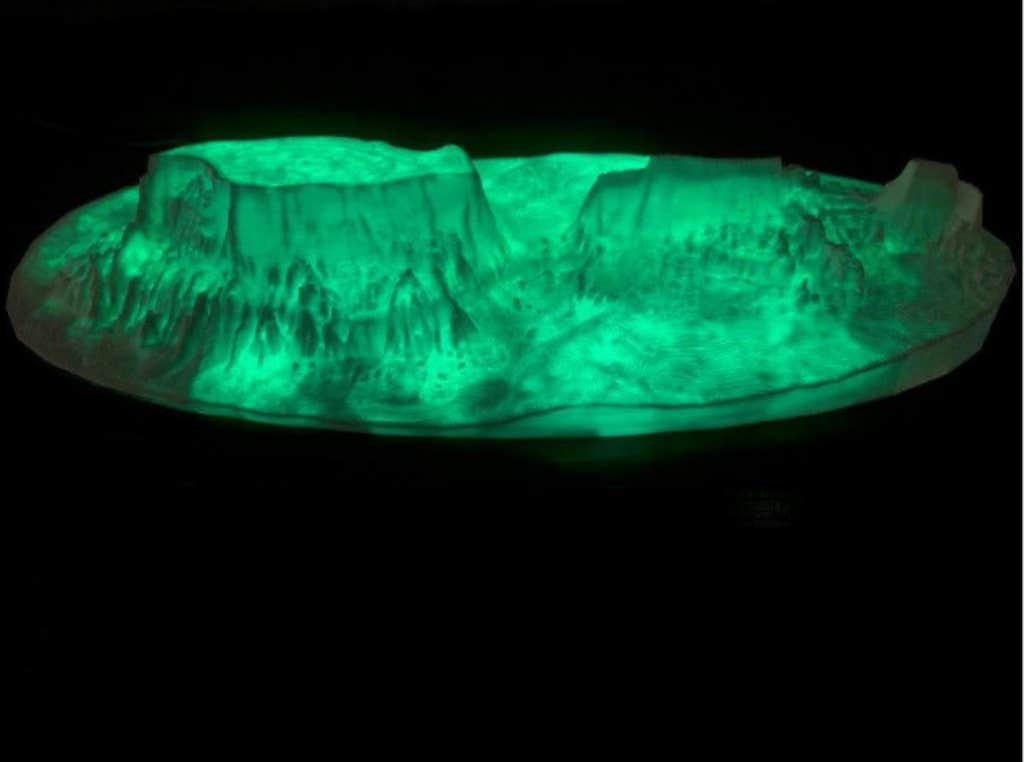
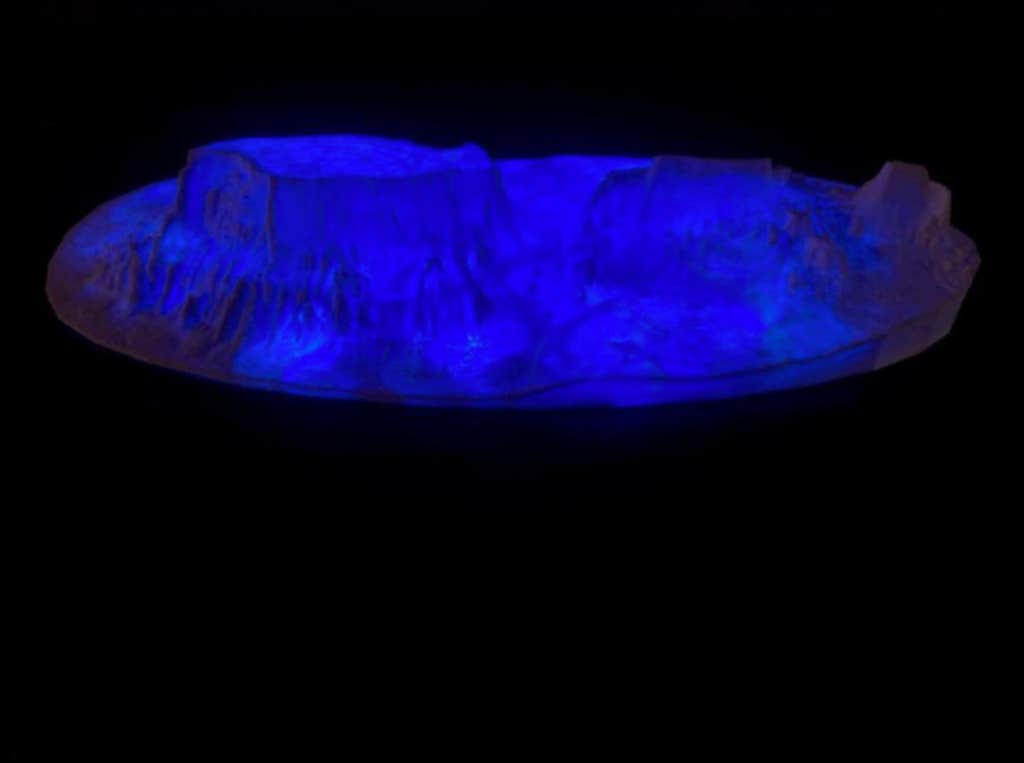
Natasha Russell
Hand tinted screen prints
Nested 4 A- Collections
Landscapes built from drawings based on different visualisations of data collection.
8″ x 23″
2017
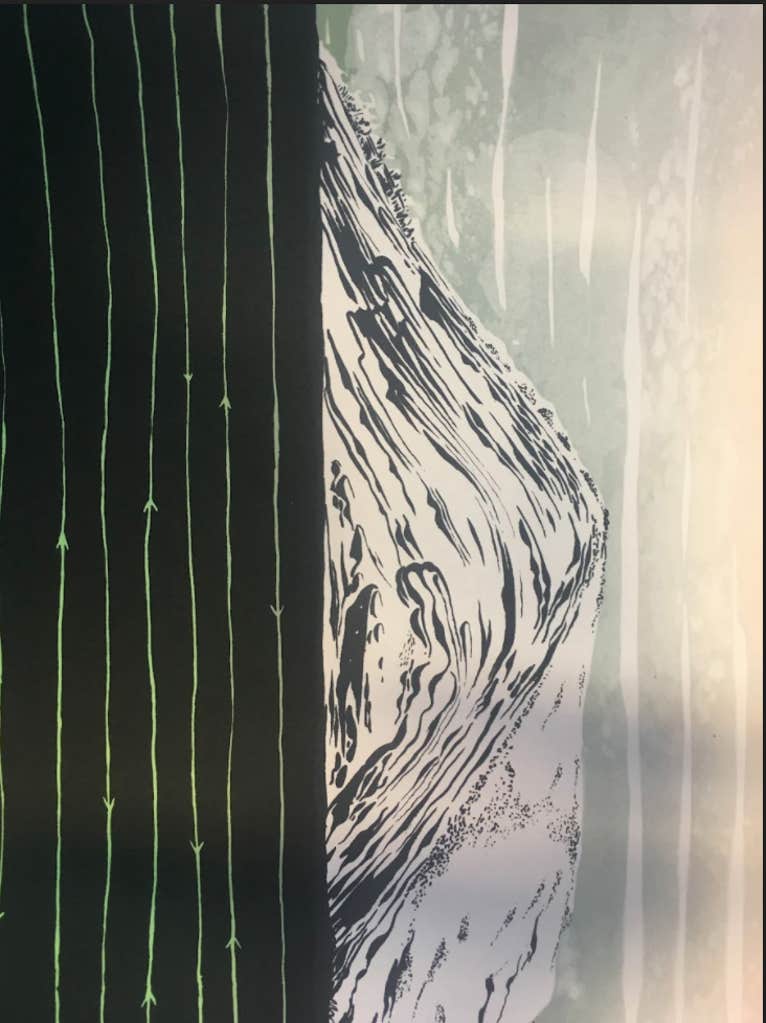
Natasha Russell
Hand tinted screen prints
Nested 2 – Multibeam Mountains, Mounds, Ripples
Landscapes built from drawings based on different visualisations of data collection.
24″ x 22″
2017
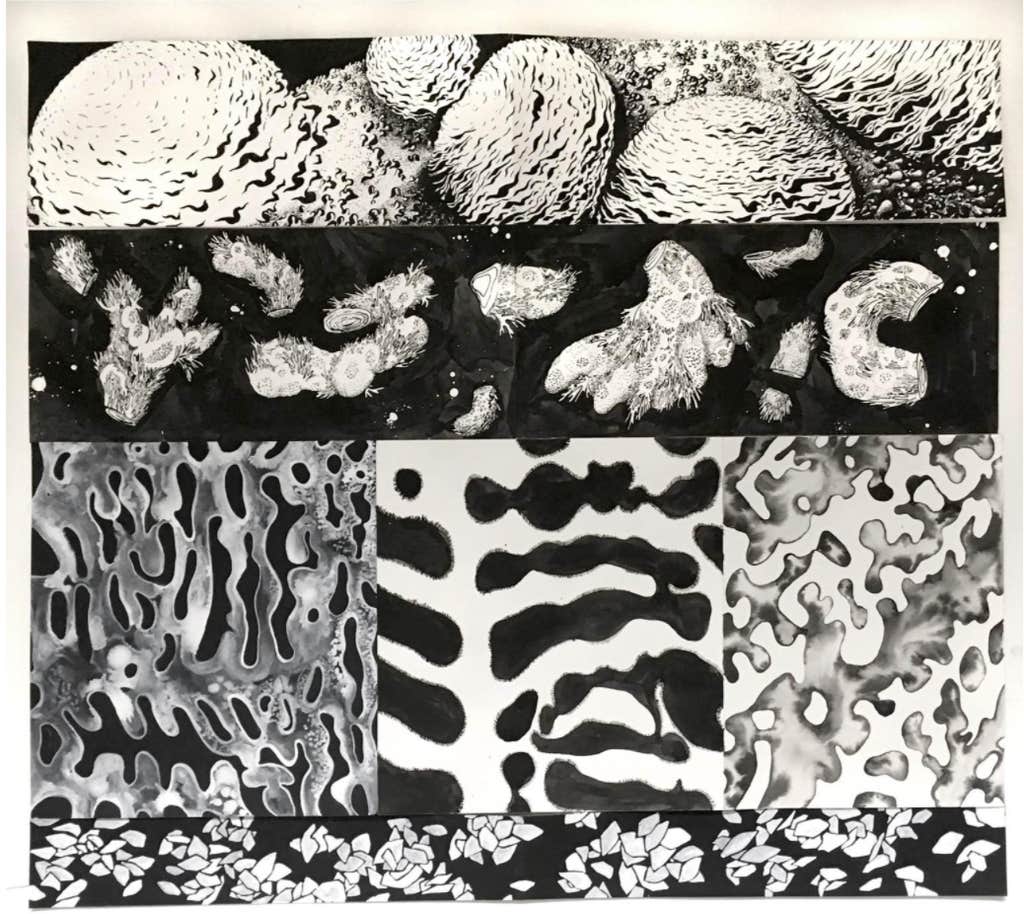
Rebecca Rutstein
Acrylic & Acrylic Gouache on Canvas
Mekong Plume I
Mekong Plume I 2016, Transit Vietnam to Guam
18″ x 18″
2016
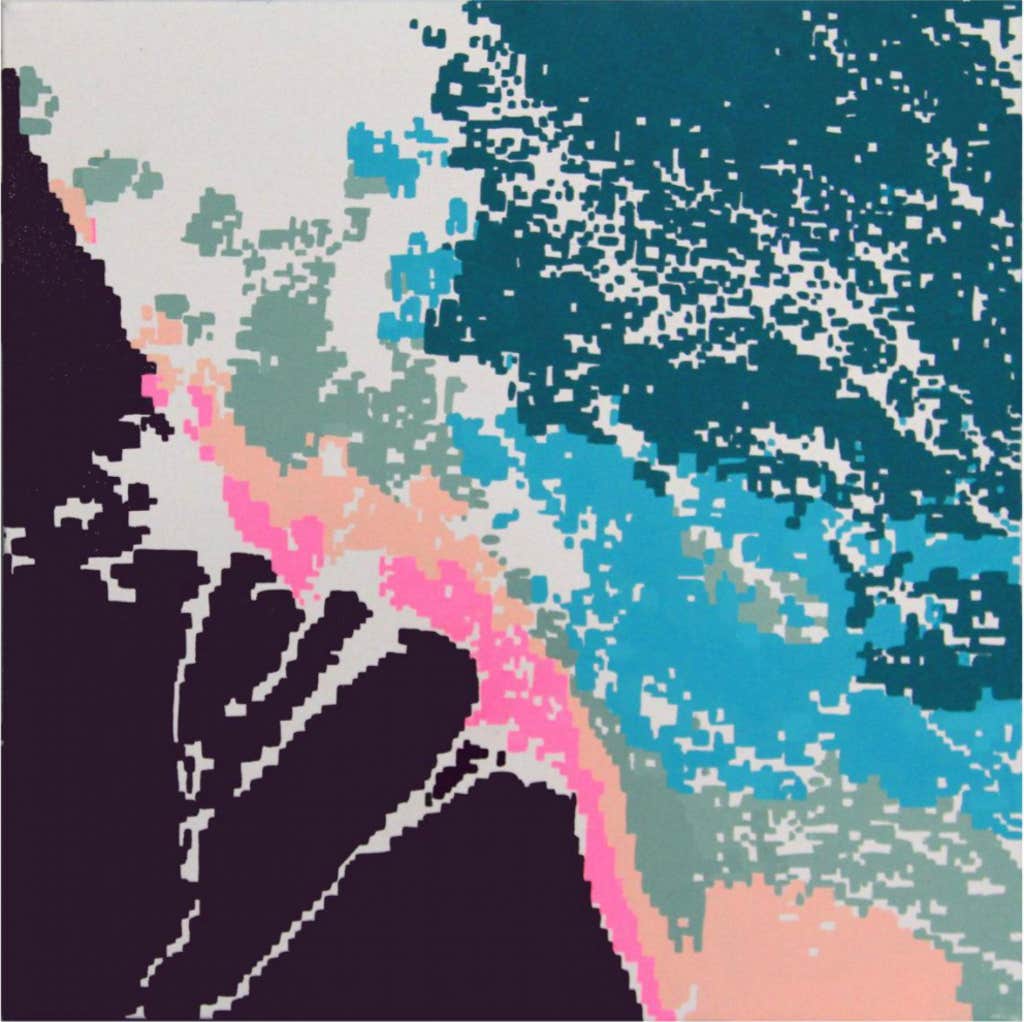
Rebecca Rutstein
Acrylic on Canvas
Mekong Plume IV
Mekong Plume IV 2016, Transit Vietnam to Guam
18″ x 18″
2016
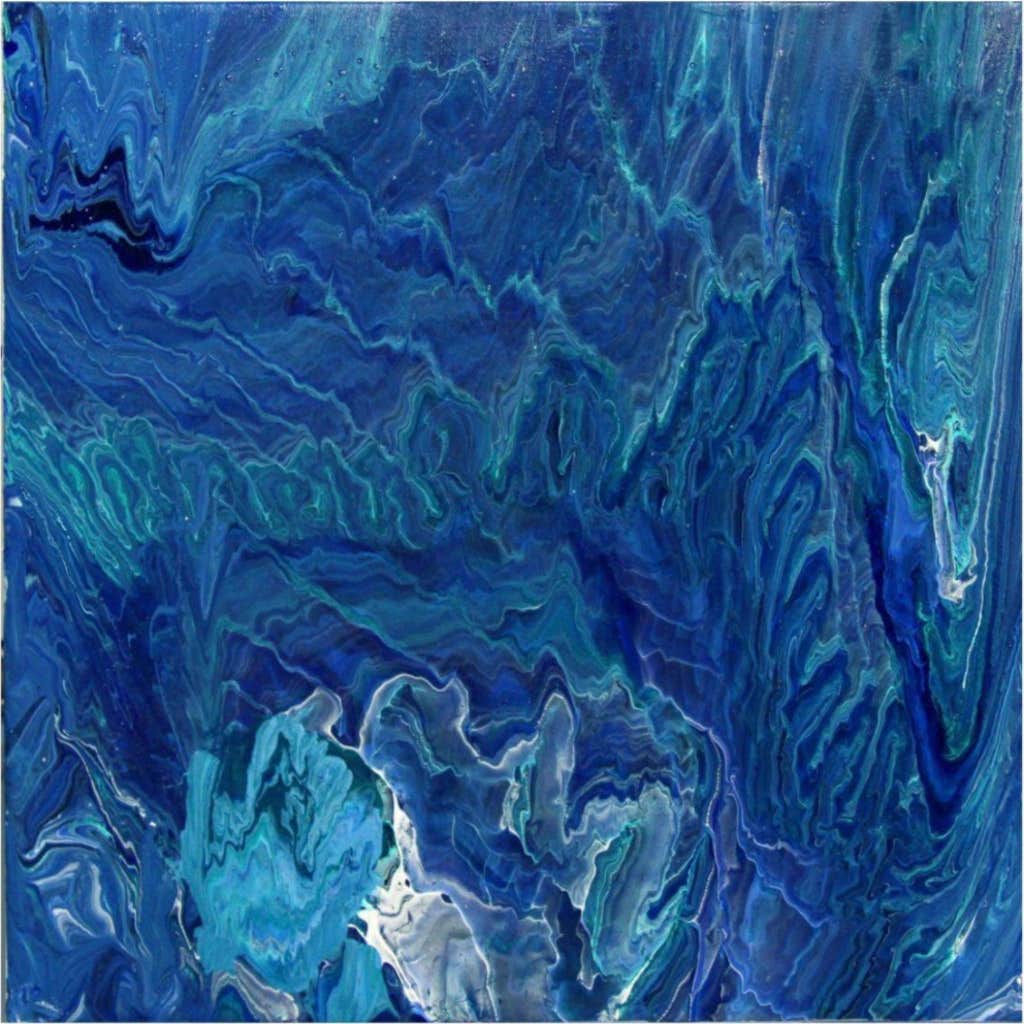
Tanya Young
Gouache on Stonehenge paper
Ctenophore From San Juan Seamount
Ctenophore (Comb Jelly) floating in the deep open ocean at the breathtaking San Juan Seamount 1450 Meters depth. Ctenophores are invertebrate animals which swim by using cilia. Despite its common name, Ctenophores are not jellyfish. This Ctenophore, beautiful and ethereal, appears as a starry galaxy floating in a vast space.
10” x 8”
2021
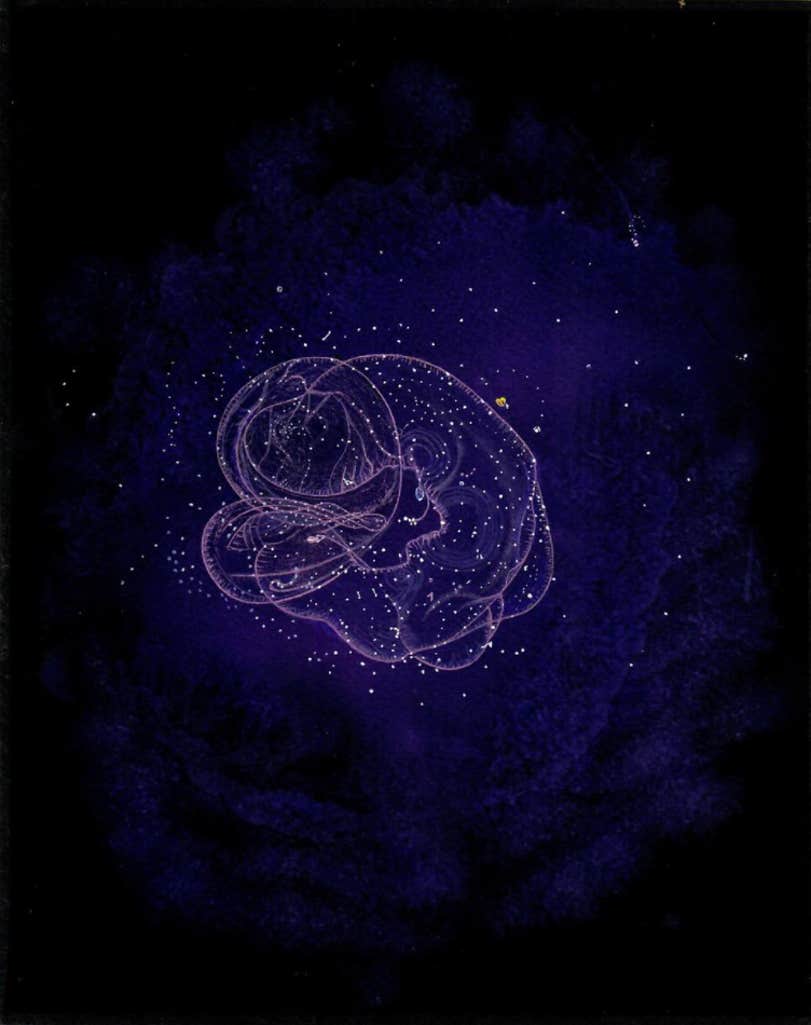
Ale de la Puente
Ink on cotton paper
Bathymetry Drawings -on a moving vessel Diptych
To map the ocean floor is an endeavor that encounters great difficulties that technology helps us confront. Some of them seemas simple as the wave movements of the sea; others involve salinity, temperature, and continuous surveillance of attentive human sight.
To translate it into art, I thought about the difficulties of drawing in a moving vessel when a drawing requires precise lines. During the first leg of the cruise, I learned about bathymetry geology and how geologists interpret maps. The beauty of the maps that translate the bathymetry data done by the vessel’s path made me think about the course of drawing and how both make visible the invisible.
Exploring the process, without being onboard of R/V Falkor, I decided to do the drawings in the nearest waterbed I could find where I live. That was at Xochimilco in Mexico City. In a moving chinampa, I draw each artwork with the difficulties of a moving vessel and the heat of the Sun drying the ink faster than expected.
20″ X 20″
2022
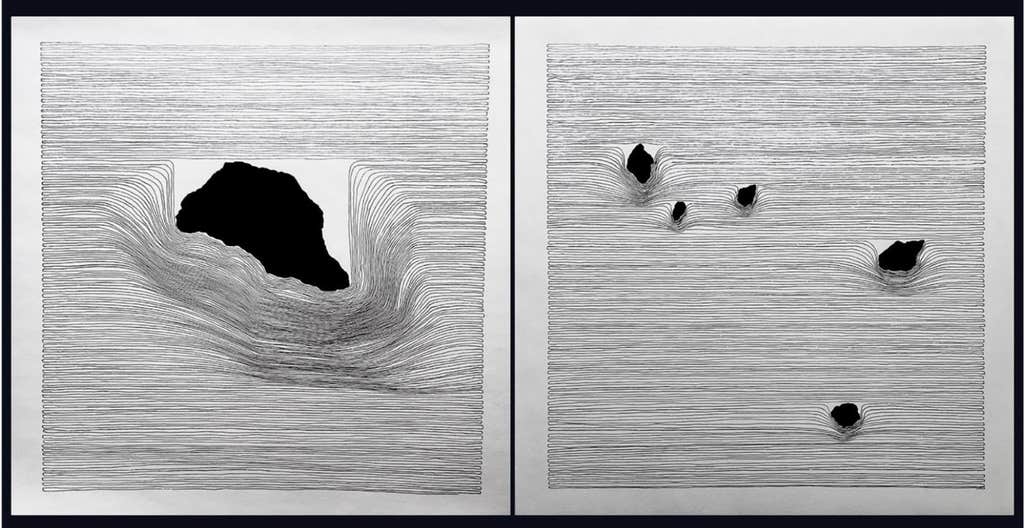
The United Nations has proclaimed a Decade of Ocean Science for Sustainable Development (2021-2030) to support efforts to reverse the cycle of decline in ocean health and gather ocean stakeholders worldwide behind a common framework that will ensure ocean science can fully support countries in creating improved conditions for sustainable development of the Ocean.
The 7 Ocean Decade Outcomes describe the Ocean We Want:
A clean ocean where sources of pollution are identified and reduced or removed.
A healthy and resilient ocean where marine ecosystems are understood, protected, restored and managed.
A productive ocean supporting sustainable food supply and a sustainable ocean economy.
A predicted ocean where society understands and can respond to changing ocean conditions.
A safe ocean where life and livelihoods are protected from ocean-related hazards.
An accessible ocean with open and equitable access to data, information and technology and innovation.
An inspiring and engaging ocean where society understands and values the ocean in relation to human wellbeing and sustainable development.Learn more at oceandecade.org
